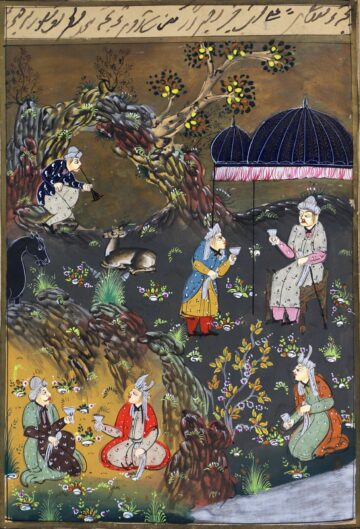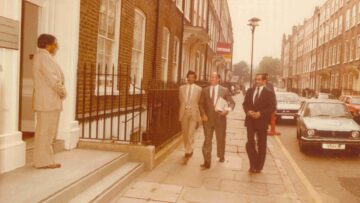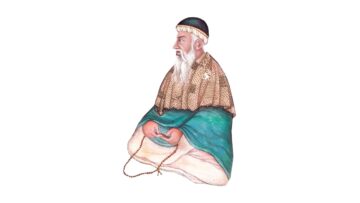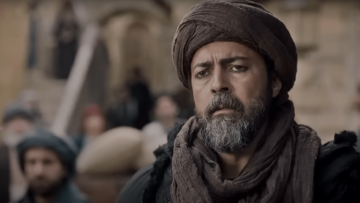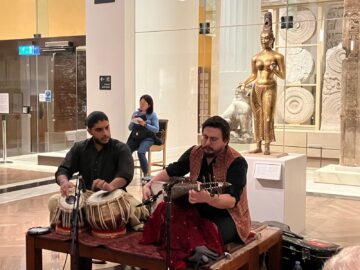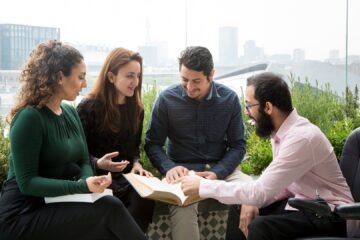The three-day international colloquium, “Word of God, Art of Man: The Qur’an and its Creative Expressions”,was launched on October 18, 2003 with an evening reception and plenary lecture by Gulru Necipoglu, Aga Khan Professor of Islamic Art and Architecture at MIT. The formal preceedings, beginning with an address by His Highness the Aga Khan on October 19, was followed by the Opening Lecture by renowned Art Historian, Oleg Grabar.
Attended by more than 250 scholars, students and artists, the inaugural conference of the Qur’anic Studies Unit of The Institute of Ismaili Studies is the second in a series of events inaugurating the 25th Anniversary of the founding of The Institute of Ismaili Studies, following the Nasir Khusraw Millenium Conference held earlier this year in Tajikistan.
The colloquium, rather than approaching the Qur’an from a theological or historical perspective will focus on the Sacred Word of Muslims as a source for creative and artistic inspiration. From its influence on the built environment, metalwork, woodwork, coins, textiles and ceramics, the conference will examine how the discourse of the Qur’an has provided the motivation and impetus for many Muslims to beautify the spaces they inhabit and the objects which they cherish.
In her plenary lecture, Professor Necipoglu, speaking to a full audience, spoke about the influence of the sixteenth-century Turkish architect Sinan in creating a distinctive Ottoman style of decoration in adorning the Sultanid mosques in Istanbul. Through the use of Qur’anic epigraphy which adorn many of the religious buildings of Istanbul, Professor Necipoglu was able to illustrate how the architect was able to create a new visual style that was distinctly Ottoman.
In his opening address on the morning of October 19, 2003, the Aga KhanA title granted by the Shah of Persia to the then Ismaili Imam in 1818 and inherited by each of his successors to the Imamate., spiritual leader (imamIn general usage, a leader of prayers or religious leader. The Shi’i restrict the term to their spiritual leaders descended from ʿAlī b. Abī Ṭālib and the Prophet’s daughter, Fatima.) of the Ismaili community and Chairman of The Institute’s Board of Governors reflected on the message of the Qur’an and how it has inspired artistic expressions and traditions of interpretations amongst Muslims and scholars. ‘Does not the Qur’an challenge the artist, as much as the mystic, to go beyond the physical – the outward?’ asked the Aga Khan in his opening address. ‘Whatever its vernacular forms, the language of art, more so when it is spiritually inspired, can be a positive barrier-transcending medium of discourse.’
In addition to speaking about the Qur’an and the artistic plurality which it has inspired, the Aga Khan also spoke about pluralism of interpretation that it has engendered. ‘Freedom of interpretation is a generosity which the Qur’an confers upon all believers,’ said the Aga Khan. ‘Happily, as a result the Holy Book continues to guide and illuminate the thought and conduct of Muslims belonging to different communities of interpretation and spiritual affiliation, from century to century, in diverse cultural environments. The Noble Qur’an extends its principle of pluralism also to adherents of other faiths.’
Closing the morning session, Oleg Grabar, Professor Emeritus at the Institute of Advanced Study at Princeton University addressed the audience by examining how the Qur’an has shaped and affected the arts. In his lecture, Professor Grabar raised several theoretical questions and looked to examples in Muslim history to try and understand, how revelation, more generally, and the Qur’an in particular, has interfaced with the arts in providing a visual expression to the Sacred Word.
Accompanying the Colloquium, an exhibition of manuscripts and artefacts in the Institute’s collection are on display. Extending from China to Tunisia and ranging from the 9th to the 19th century, Qur’anic manuscripts are displayed with important scientific texts that reflect the great diversity and range of visual, artistic and intellectual cultures from the Muslim world.

